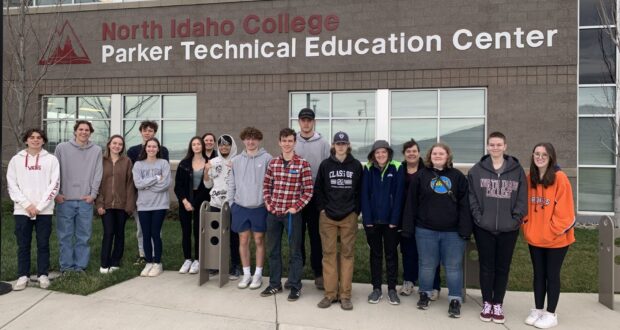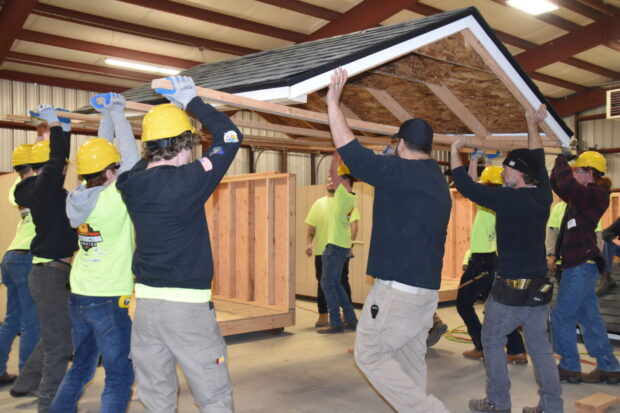Instead of reaching into their pockets to provide for their students, teachers should reach out to their local education foundation.
“We know that the tax dollars can only go so far,” said Stephanie Hudson, executive director of the Twin Falls School District Education Foundation. “If the teachers in the classroom want to provide that next level of really enriching learning, they’re going to need that funding.”
Her foundation is one of many across Idaho that supplement school district budgets that often fall short.
Usually foundations offer grants to teachers, typically from $500 to $1,000, for classroom supplies or projects. In the Moscow School District, for example, foundation dollars set up a mock store to help special education students learn to manage money.
Foundations also support families in need, facilitate staff recognition programs and offer college scholarships.
Sandpoint’s Panhandle Alliance for Education (PAFE), celebrating its 20th anniversary, has awarded over $2 million dollars in teacher grants.
“To (teachers), it makes a huge difference,” said Amy Longanecker, PAFE’s executive director. “They feel supported, like they have a fan club in PAFE.”
School foundations are now nearly ubiquitous across the state and play an essential behind-the-scenes role in school funding.
And it’s the teachers who drive how money is spent.
Read more here about how education foundations evolved in Idaho.
“We could not do it without them”: education foundations spark innovation
Jeralyn Mire, a post-secondary counselor at Sandpoint High School, has been awarded a number of grants from the foundation and said the funds help her to experiment with new approaches.
For example, she started a program called “community connections” that involved taking teachers out into the community to talk to employers about the skills they seek in employees. Teachers were then able to use that knowledge to better inform their teaching practices.
Another example is a senior night in which students get a career, mock money, student loans, and bills and then learned how to budget their money.
“We could not do it without them,” Mire said of PAFE’s support. “It just helps bring life and real-world application and excitement to learning. It just helps students so much.”
PAFE helps get these initiatives off the ground, and then long-term funding is usually picked up by the district or corporate sponsors once they see the event’s effectiveness.
“Districts are more likely to fund what’s tried and true and efficient,” Mire said. “There’s not a lot of excess funds to try things in traditional education.”

The foundation has also worked to support learners before they enter the K-12 system (with early learning initiatives) and after they leave (with efforts to increase go-on rates to colleges and trade schools).
The foundation’s Born to Read program, for example, provides every newborn with a packet of books and a library card.
PAFE is now focused on creating a more robust CTE program.

“We always listen to educators,” Longanecker said. “It’s never our idea, we don’t tell them what to do – they approach us.”
Ruby Jackson, a special education and Title I teacher at Paradise Creek Regional High School in Moscow, said her local foundation has been a “much needed support” for “new and innovative experiential learning projects.”
For example, the foundation funded the purchase of new kitchen appliances so the alternative school’s students could get hands-on cooking experiences every year. The appliances also mean the school can better collaborate with the University of Idaho’s Eat Smart Idaho nutrition program.
Jackson’s school serves at-risk youth, and she said its important to engage them in exploratory, experiential, hands-on learning — and the grants she’s received help make that possible.
Foundations are behind awards, scholarships, and more
The Boise Public Schools Foundation raises about $3.5 million each year and gives that money right back to schools, students, and teachers, for needs ranging from computer intervention programs, to all-day kindergarten, to redoing Capital High School’s planetarium.
Foundation funds can also be used to help families in need, whether that’s to repair a vehicle, subsidize expensive housing costs, or pay a utility bill. School counselors and social workers identify those families in need and link them with foundation funds.

Foundations are often behind staff recognition programs as well. The Twin Falls School District Education Foundation organizes a teacher-of-the-month program, and acknowledges each winner in person by visiting their classroom or surprising them at a staff meeting. One of those finalists is then entered into Idaho’s teacher-of-the-year competition.
“Our hope is that (teachers) feel seen,” Hudson said. “In the day-in, day-out, there’s not a lot of recognition for teachers.”
Most foundations also offer college scholarships for graduating seniors. The Moscow Education Foundation awards two scholarships per year for students to attend the University of Idaho or a tech school in Idaho.
The Lewiston Independent Foundation for Education (and many other foundations) also funds social service needs (such as clothing, shoes, or homeless lodging), field trips, and classroom supplies – “whatever is needed to support the district,” according to office secretary Carla Gomez, who is the organization’s only paid employee. The organization put about $167,000 back into the community last year.
“Anything we can do collectively or individually for students in the state is a good thing,” Gomez said.
Jennifer Henderson, the executive director for the Boise foundation, would agree.
“I want kids to have the most amazing educational experience they can have,” she said. “We could have lawyers, bankers, or the future president walking around our halls right now … There’s no more important place to park your money.”
